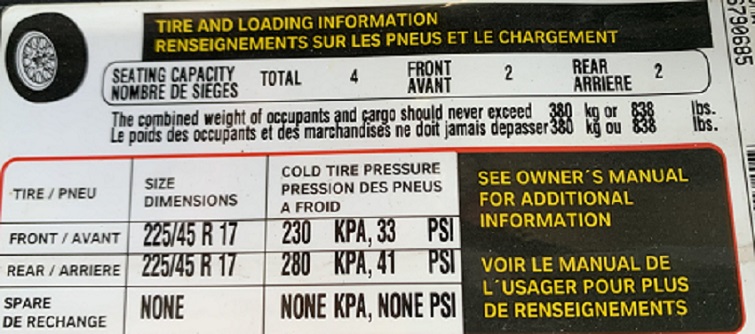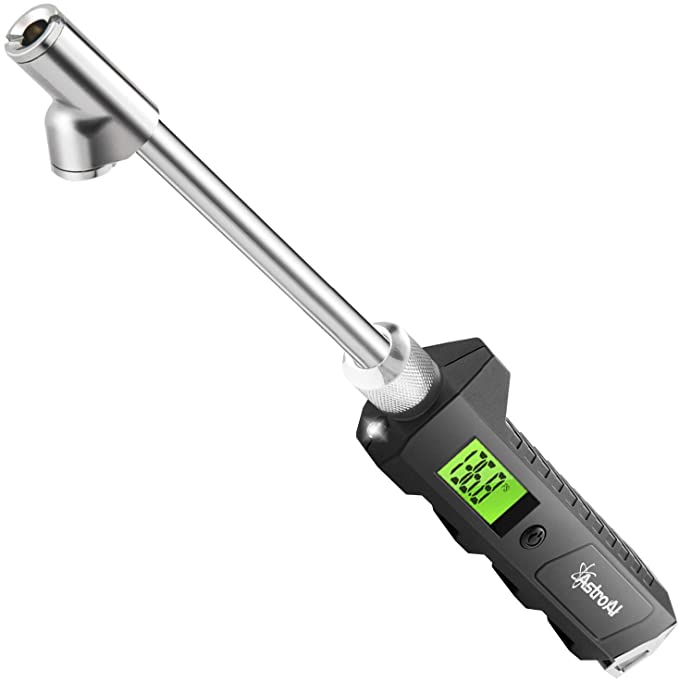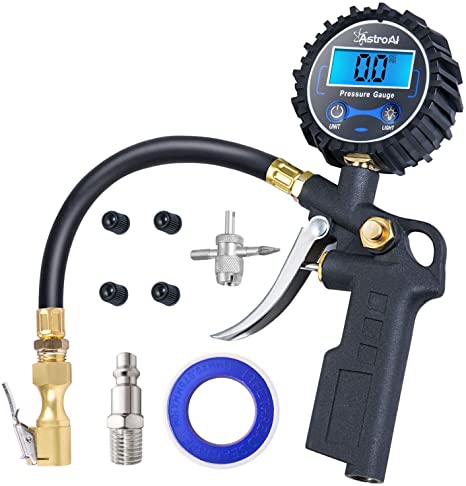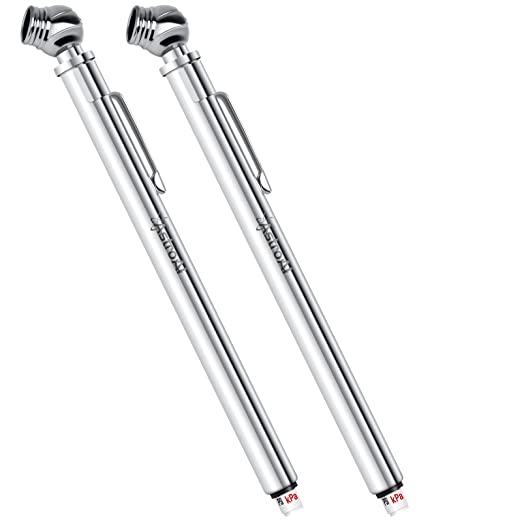Tire Pressure Importance
It is extremely important to have the correct tire pressure while driving. TPMS sensor light will illuminate on your dashboard to make a driver aware of a tire with low air. To learn more about TPMS sensors check out this article. Having the incorrect tire pressure can result in premature tire wear, degraded vehicle handling, as well as negatively impacting your vehicles gas mileage and general performance.
If possible, always set tire pressures when the vehicle is cold. Vehicle is considered cold if the vehicle has been sitting for 2-3 hours. To set your tire pressures as accurately as possible, drive as little as possible before setting and filling your tires with air. After driving for about half an hour in the summer heat, your tire pressure can increase as much as 5 PSI.
How to Check Tire Pressure With a Gauge
2. Push the tire pressure gauge into the valve stem.
3. Compare the recommended PSI to the reading from the tire pressure gauge.
4. If the reading is below the recommended pressure, add air.
5. If the reading is above the recommended pressure, release some air and recheck pressure until reaching recommended air pressure.
- TIP: Don’t forget to put your tire caps back on!
This sticker is found on every single vehicle, on the inside of the drivers side door panel. It clearly states the front tires are specified to be set to 33 PSI and the rear tires to be set to 41 PSI. The sticker also states that these pressures should be set when the tires are cold, before the vehicle has been driven. I recommend setting tire pressures to the exact specification the vehicle recommends!




